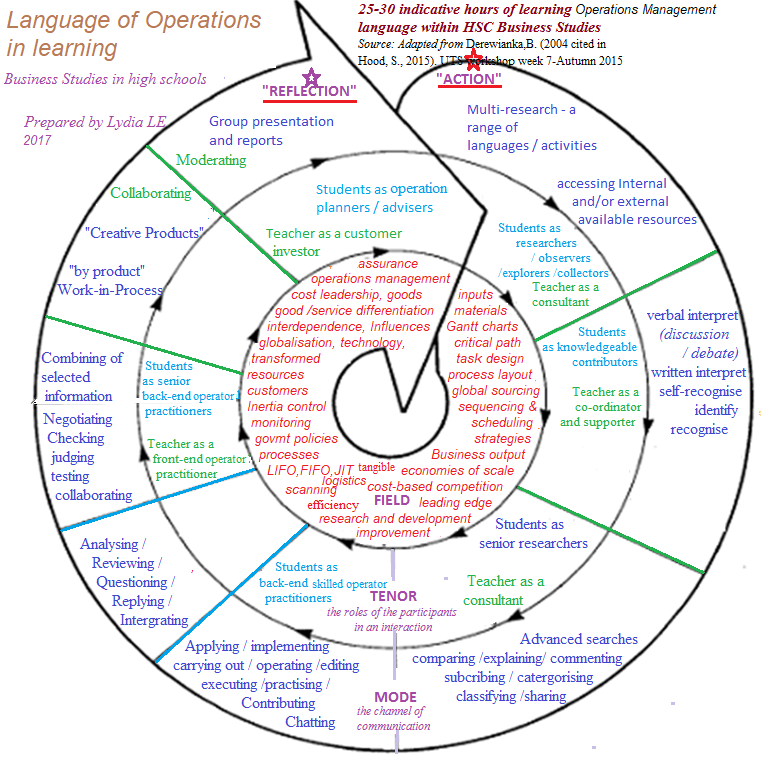HSC
Business Studies-Topic3:
Finance
Posted by Lydia Le
Statement
of Financial Position
What is Balance Sheet?
According to Investopedia (2017), a balance sheet is defined as ‘a financial statement that summarizes a company's assets, liabilities and shareholders' equity at a specific point in time. These three balance sheet segments give investors an idea as to what the company owns and owes, as well as the amount invested by shareholders.’
Clearly, a balance sheet provides information that helps identify and discover the business position focusing on three key account areas/account components or concerns:
1-Assets: Items the business owns
2-Liabilities: Debts the business owes, and
3-Owners' Equity: The amount of money is owing to business owners (The business and its owners are the separate entities by law)
What does it look like?
As mentioned above, a balance sheet must show three key things of Assets, Liabilities, and Owners' Equity. For example, a pattern of a Balance Sheet - showing what it looks like, encompassing these key things can be displayed as below.
Balance Sheet
As of 30th June 20XX [End of Financial Year]
ASSETS
|
[the business owns]
|
|
|
Current Assets (CA)
|
|
|
|
$$$$$
|
|
Accounts receivable
|
$$$$$
|
|
Inventory /Stock
Pre-paid expenses
|
$$$$$
$$$$$
|
|
Total Current Assets
|
CA-$$$$$$
|
|
|
|
|
Non-Current Assets (NCA)
|
|
|
Plant and equipment(incl. Land)
|
$$$$$
|
|
Business premises(incl.Property)
|
$$$$$
|
|
Vehicles & Furniture
|
$$$$$
|
|
Total Non-Current Assets
|
NCA-$$$$$
|
|
|
|
TOTAL ASSETS (TA)
LIABILITIES [the business owes]
|
CA+NCA-$$$$$$$
|
|
|
|
|
Current Liabilities (CL)
|
|
|
Accounts payable
|
$$$
|
|
Bank overdraft
|
$$$
|
|
Credit card debt (payable)
Accrued wages
|
$$$
$$$
|
|
Tax liability
|
$$$
|
|
Total Current Liabilities
|
CL-$$$$
|
|
|
|
|
Non-Current Liabilities (NCL)
|
|
|
Long-term loan L1
|
$$$$
|
|
Long-term loan L2
|
$$$$
|
|
Total Non-Current Liabilities
|
NCL-$$$$
|
|
|
|
TOTAL LIABILITIES (TL)
|
CL+NCL-$$$$
|
|
|
|
NET ASSETS (TA-TL)
|
$$$$$$
|
|
|
|
OWNERS' EQUITY
|
$$$$$$
|
[money left over to owners - Owner's Equity is also called Shareholders' Equity]
Note: the figures of Net Assets and Owners' Equity are always the same - They are in balance. That's why we call the Balance Sheet.
Why does Balance Sheet matter?
To sustain business growth, understanding the situation and position of the business' financial health is extremely important. A balance sheet describes this position as a "snapshot of a company's financial condition" (Wikipedia, 2017). For that reason, a Balance Sheet is also known as a 'statement of financial position'.
Through the Balance Sheet, it provides information about the position health of a business at any operating period that shows the business is strong or not. It is believed that at any particular moment, Balance sheet helps the business know and determine that how much money the business would have left if its all assets are sold to pay off all the business debts (Business Queensland, 2017).
In addition, internally, the Balance Sheet reveals the money that the business owns and owes, and how much is left over for its owners so that this helps business' managers in making decisions in terms of allocating the money within its operations.
For effective decision-making on money's allocation to run day-to-day business operations, and control money to pay the business' current debts, the balance sheet provides crucially financial information. This helps the Finance staff work out the business' working capital and business liquidity. Knowing the working capital and liquidity gives the finance manger/s a powerful tool and indication in determining the financial health and position of the business.
More importantly, externally in particular for medium and large companies, by knowing the business' financial position at any particular moment, the Balance Sheet is bringing information and assisting investors in decision-making whether to invest their money in that business or not.
How is Balance Sheet used in practice?
The Balance Sheet (BS) adheres to the following formula: Net Assets = Owners’ Equity
Where Net Assets = Total Assets – Total Liabilities
(Owners’ Equity is also known as Shareholders' Equity)
The procedure of practice includes:
1-Collect information putting in BS in which the components of Current Assets and Non-Current Assets, Current Liabilities and Non-Current Liabilities are included.
2-Produce a Balance Sheet for the business
3-Analyse all figures/information
4-Provide/deliver sound decision-making for the business.
Useful links and References






